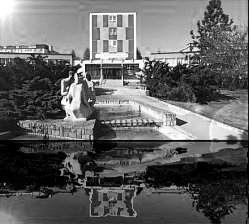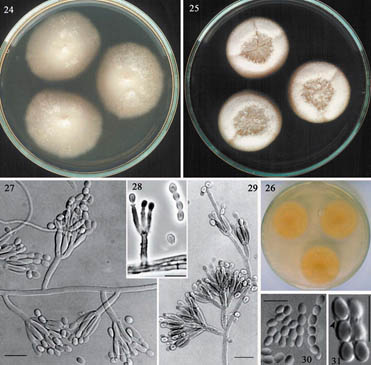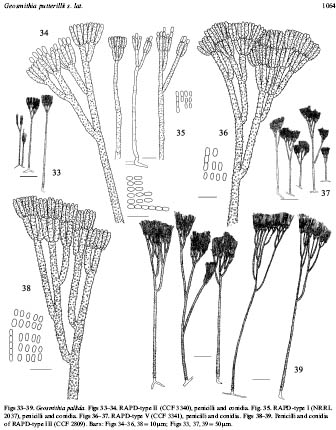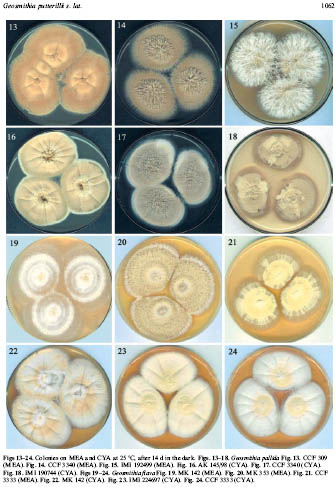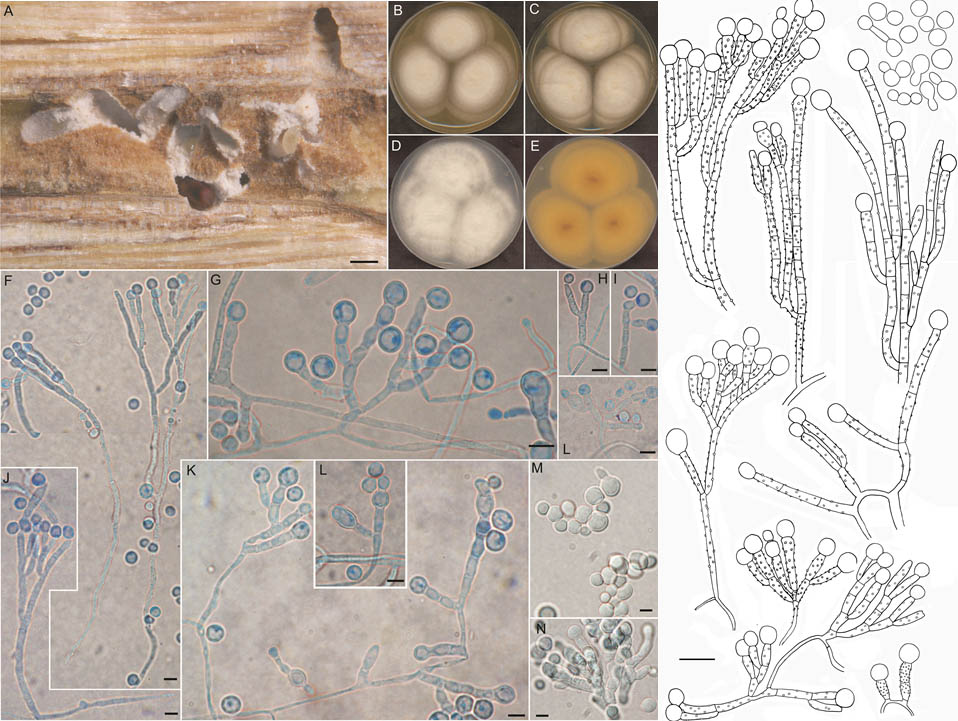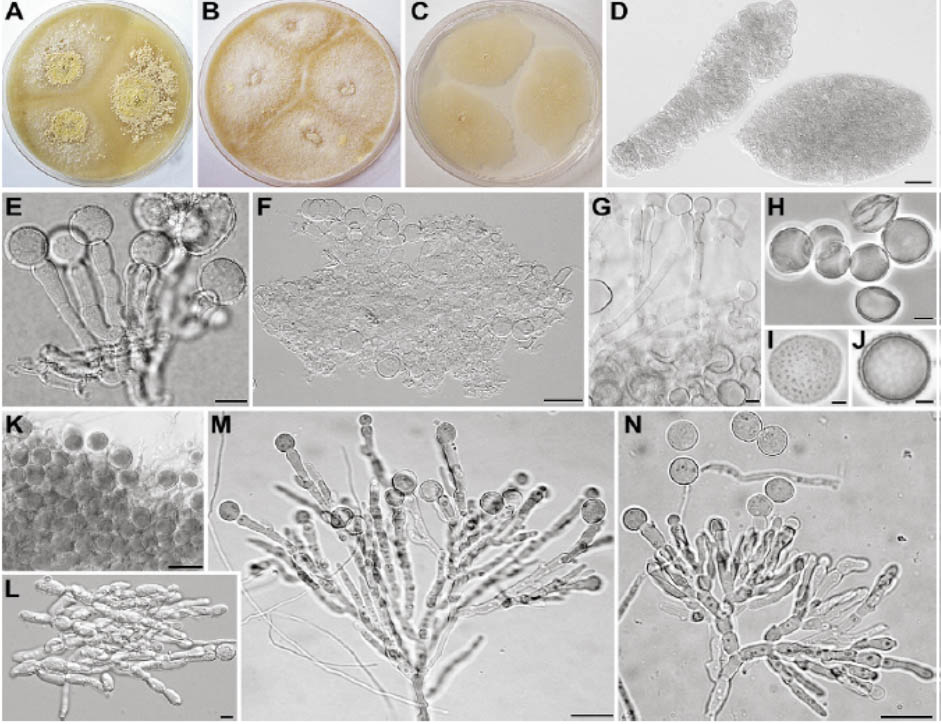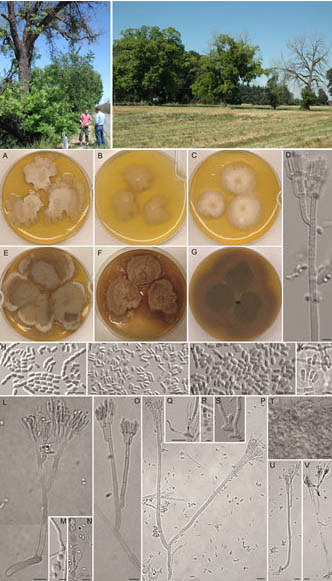Web design by Martin Kostovcik, 2010
Uncovering mysteries of bark beetles symbionts
Bark beetles are important component s of forest habitat, they acts as natural selection agents and can be even serious tree pathogens. They are associated with phylogeneticaly diverse fungal symbionts, which can effect beetles developments, provide additional or main food source and attack plant tissues. The long-term objective of our team is to gain complex knowledge about little known Geosmithia symbiosis, its evolutionary history, diversity and interactions with the environment, encompassing in the term evolutionary ecology. This incorporates an understanding of phylogenetic relationship and interactions with other organisms and environment; it examines the selective pressures imposed by the environment and the evolutionary response to these pressures. The evolution of Geosmithia, including the description of the main driving mechanisms and adaptations, is reconstructed on the basis of knowledge about their phylogenetic relatedness, area of distribution, host range and specificity, physiological profile (enzymatic activities, C, N, P, S sources), biochemistry (content of the DNA, ergosterol, and fatty acids), spectrum of secondary metabolites (using the HPLC-MS fingerprinting) and ecology of vector beetles.
We isolated cca 2000 Geosmithia isolates from western Palearct and several regions of the USA, Australia and Costa Rica. 50 species of the genus (from which 21 were published by our group) were found until now and are maintained in our collection. Geosmithia are typically found in association with phloeophagous bark beetles, bostrichids and weevils, and over of 90% from the screened insects species were found to be their obligate or facultative vectors. A derived ecological strategy, found in three Geosmithia spp., represents association with ambrosia beetles, where they act as primary ambrosia fungi. Several species also occur on alternative substrates or can evidently live as endophytes of healthy trees. One species, responsible for dieback of Juglans in the USA was proven to be a pathogenic fungus, but ecology of others is not yet known. Geosmithia community pattern and presence of primary ambrosia fungi suggest the long-term and stable association between Geosmithia and bark beetles.
Many other fungi were isolated during the study of Geosmithia on bark beetles. The non-incidental association of bark beetles and Quambalaria cyanescens (Basidiomycota: Microstromatales) was discovered and ophiostomatoid fungi associated with Cryphalus piceae and Tetropium spp. were characterised. Three new species of Gondwanamyces and Raffaellea were described from ambrosia beetle Scolytodes unipunctatus.

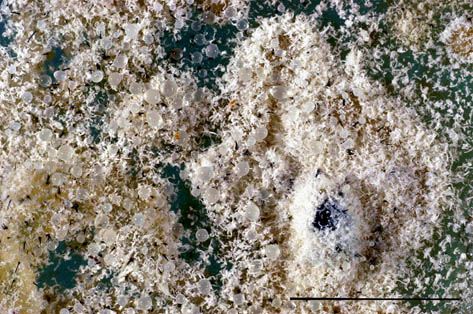
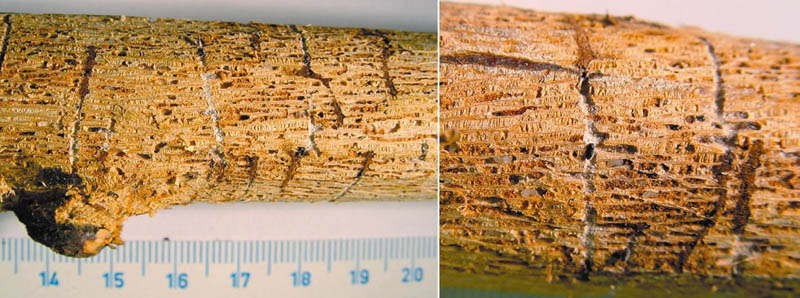
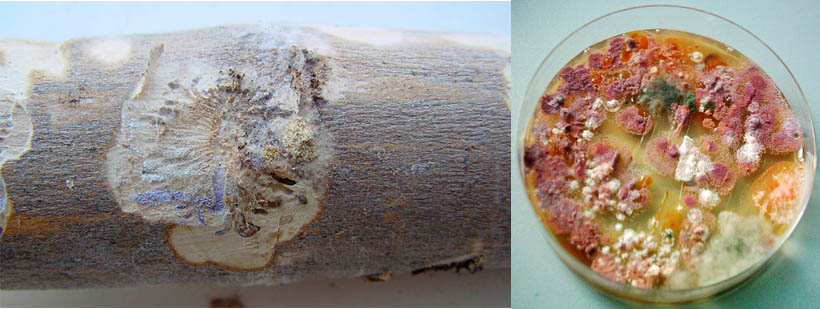
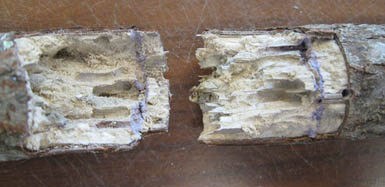
Agar plate with adult of elm bark beetle (Scolytus multistriatus) and associated symbiotic fungi. Conidiophores with small droplet belongs to Ophiostoma novo-ulmi, a causal agent of Dutch elm disease. Conidiphores with whitish masses of dry conidia are Geosmithia sp. Gene for cerato-ulmin, a protein of O. novo-ulmi involved in Dutch elm disease, was introgresed by horizontal transfer to Geosmithia. The pathogenic potential of Geosmithia to elms is a subject of recent research.
Yellowisch mat of Geosmithia flava growing in galleries of bark beetles Ernoporus tiliae on Tilia. Bark beetles on hardwoods are typical vectors of Geosmithia.
Galleries of fig bark beetle (Ficus carica) on fig tree and agar plate with isolated fungi. Lilac coloured Geosmithia lavendula is visible.
Geosmithia spp. is vectored also by other subcortical insect like bostrichids, long horn beetles and buprestids. An example is bostrichid beetle associated with Poison eve (Toxicodendron diversilobum) vectoring lilac sporulating Gesomithia lavendula.
Field work. Sampling of fig bark beetles in Wadi Mujib in Jordan.
Geosmithia fassatiae, a fungus described in our lab named after Czech mycologist Olga Fassatiová. This world-wide distributed fungus is typically associated with bark beetles on Quercus, Carpinus and Prunus.
Conidiophores of G. pallida. This species occurs on bark beetles as well as on non-specific sunbstrates like soil and cereals. It shows typical morphology of phloem inhabiting Geosmithia spp.. Similar morphology has genus Penicillium and G. pallida was formerly placed to this genus.
A puzzle showing variability of Geosmithia colonies. They are never green and typically exhibits pale shedes of cream, brown, yellow and red.
Geosmithia microcorthyli M. Kolařík growing in galleries of ambrosia beetle Microcorthylus sp. (Costa Rica) possess morphological adaptations (large and solitary spores) typically found in other unrelated ambrosia fungi. Such morphological characters convergently originated in all lineages of ambrosia fungi.
Geosmithia eupagioceri M. Kolařík, a primary ambrosia fungus of ambrosia beetle Eupagiocerus dentipes.
Widespread mortality of Juglans nigra has occurred in the western USA over the past decade. Tree mortality is the result of aggressive feeding by the walnut twig beetle (Pityophthorus juglandis) and subsequent canker development around beetle galleries caused by Geosmithi morbida M. Kolařík, E. Freeland, C. Utley, & N. Tisserat. Whereas Geosmithia are common saprobes associated with bark beetles attacking hardwoods and conifers worldwide, G. morbida is the first species documented as a plant pathogen. Our team further focus on studying of pathogenic mechanisms of this pathogen.
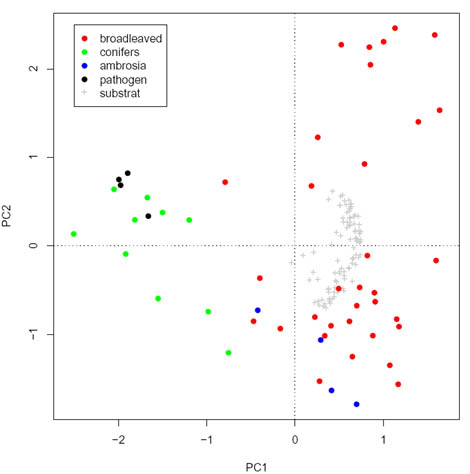
Our pilot study comparing morphology and metabolic activities within the genus using BIOLOG Phenotype Microarrays TM showed a clear ecology-correlated pattern. Clear gap in metabolic functions exists among species from conifers (together with the pathogen G. morbida from Juglans) and angiosperms. The former group utilized 5-30 from 95 carbon sources tested (with an extreme in G. morbida, which utilized only five more elementary ones), and required essential supplements for growth. The species from the latter group utilized the majority of C-sources tested, and grew well even on the basal medium. Tested species also differed in the sporulation on the media with various C-sources, which could be an important character related to the life style of the particular fungus. Such a distinct pattern points to the traits which should be under the selection pressure in this group.
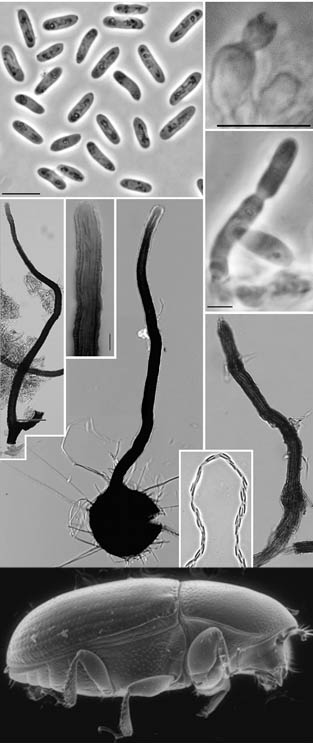
We studied newly discovered lineage of Scolytodes unipunctatus, an ambrosia beetle that infest Cecropia trees in Central America. Four species are described here: Raffaelea scolytodis M. Kolařík, Gondwanamyces scolytodis M. Kolařík, Custingophora cecropiae M. Kolařík., and Graphium sp. The genus Gondwanamyces was firstly as associate of ambrosia beetles what is unexpected strategy in this genus.








